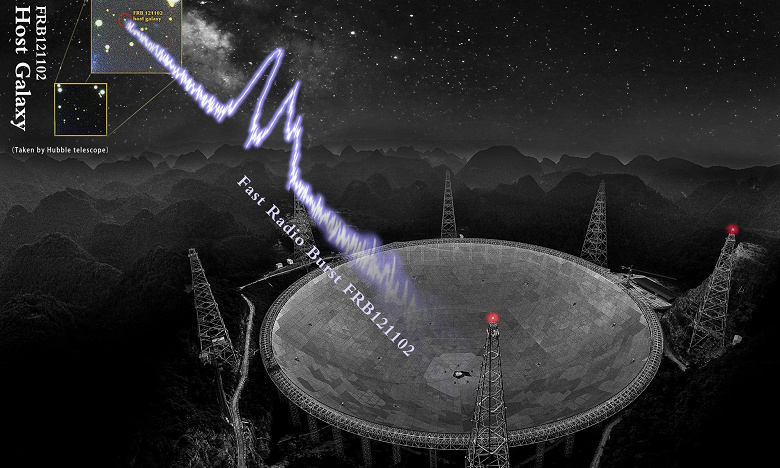FRB – the path to the solution to cosmic evolution
Fast Radio Bursts (FRBs) — powerful radio flashes lasting from a few milliseconds to several seconds. The main theory of their origin is that they are caused by magnetars — highly magnetic neutron stars. New study suggests using FRBs to measure the rate of cosmic expansion.
One of the parameters that describes the rate of cosmic expansion is the Hubble parameter, which is measured with an accuracy of several percent. However, modern measurement methods are so precise that their uncertainties do not overlap. This contradiction is known as the Hubble tension. In this regard, astronomers are looking for new independent ways to measure the Hubble parameter, and one such way may be using FRB data.
The study suggests using two distance measures derived from FRB observations. First, the signal from the FRB must travel through the diffuse intergalactic and interstellar medium, which results in frequency broadening. The amount of spectral broadening is known as the dispersion measure (DM), and the larger the DM, the greater the distance to the FRB source. Second, if the FRB signal path passes close to a massive object such as a star, then the signal may be gravitationally lensed around that object. The width of the lens can be used to determine the relative distance to the FRB source. In addition, when FRB light passes from the intergalactic medium into the interstellar medium of our galaxy, a “brightening” effect known as scintillation occurs, which also gives a measure of distance.
The researchers analyzed the data and concluded that observing FRBs with a single lens could allow the Hubble parameter to be determined with an accuracy of up to 6%. With 30 or more events, the accuracy can be improved to comparable to other measurement methods. This is already feasible with launched telescopes capable of detecting FRBs.
The use of new techniques for observing FRBs is key to resolving the inconsistencies in the Hubble parameter measurement and could lead to new understanding of cosmic evolution.

